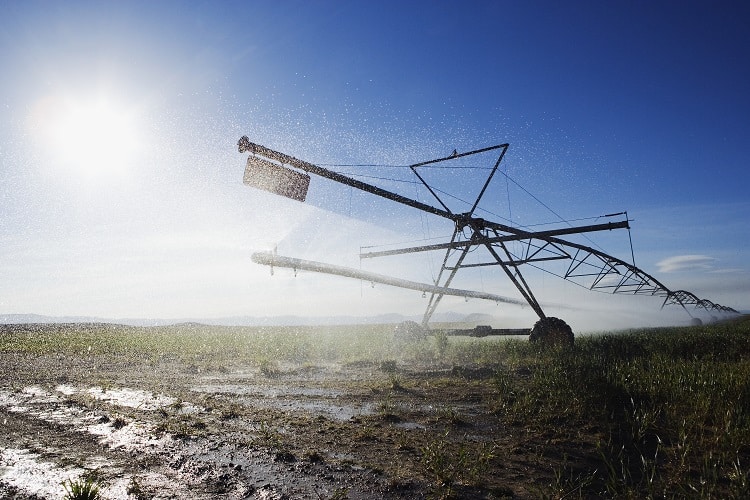The Australian Bureau of Meteorology (BoM) has officially declared that Australia is now in the grip of an El Niño climate pattern.
This declaration follows previous announcements in June made by the US government’s National Oceanic and Atmospheric Administration, followed by a warning in July from The UN’s weather agency, the World Meteorological Organization. These forecasts all point to an impending surge in global temperatures and disruptive weather and climate patterns worldwide.
Now that the BoM has declared an El Niño, what might Australian farmers expect for the summer ahead?
- Reduced Rainfall: El Niño events typically result in drier conditions for many parts of Australia. Reduced rainfall can lead to drought or intensify existing drought conditions, especially in eastern Australia.
- Warmer Temperatures: We can expect hotter temperatures and heatwaves. Hotter and drier conditions can stress crops and reduce yields. It can also lead to a decrease in water availability for irrigation.
- Shift in Agricultural Zones: Certain agricultural activities may temporarily become more viable in some regions and less so in others, based on the change in climate patterns.
- Livestock: Reduced water and feed availability can lead to decreased livestock productivity. Farmers may need to reduce herd sizes or invest in supplemental feed.
- Pests and Diseases: Changes in weather patterns can lead to an increase in certain pests and diseases which can further impact crop yields.
- Crop Prices: Reduced production can lead to increased prices for certain commodities due to decreased supply.
What could be the impacts on the Agricultural Property Market?
Property Values
Acumentis data suggests that during periods of below average rainfall and even drought, the property market tends to be thinly traded with owners typically not wanting to present their property to market in a poor seasonal condition.
Buyers in the market tend to be fewer based on tougher trading conditions and increased costs eg. Supplementary feed.
Properties that “jag a storm” and benefit from out of season grass growth, and are presented to market, often attract “grass premiums”, particularly in the northern portions of Australia including Queensland and the northern territory.
Focus on productivity and short to medium term cashflow. Buyers that can “hold or carry” a drought effected property until the next break in the season are generally very limited, meaning that potential purchasers of rural land in a drought may face less competition. Forcing a property to market, and selling a drought impacted property is not recommended.
Water Rights and Prices
There is a clear focus on water security. For grazing markets, surface water supplies are disadvantageous vs. permanent supplies.
For farming and irrigation markets, focus on High Priority water licenses and allocations over Medium or Low priority markets will become clear.
We would expect an increase in short term water rental/lease markets, particularly in areas where permanent cropping is dominant.
Shift in Investment
Investors may seek properties in regions less affected by El Niño or look for lands with better water security.
Markets in higher rainfall areas will generally remain in favour of semi-arid or arid areas of Australia. Higher rainfall regions may see a reduction in their level of production, whereas arid regions may see a total loss of production until the season breaks.



Insurance
Premiums for crop and livestock insurance may increase due to the heightened risk associated with El Niño conditions.
Infrastructure Investments
There might be increased interest in investments related to drought resilience, such as water storage infrastructure, efficient irrigation systems, and drought-tolerant crop varieties.
Demand for Support Services
Demand for agricultural support services, such as advice on drought management, could increase.
Enterprise Scale
Larger, multi-property businesses with geographic diversification have an advantage. Despite an El Niño event, some areas may still experience reasonable conditions. For such businesses, the ability to transfer livestock between properties or successfully harvest crops on some farms provides a solid foundation of cash flow and flexibility.
The declaration of El Niño by the BoM signals significant challenges for agriculture. Reduced rainfall, higher temperatures, and shifting agricultural zones will impact crops, livestock, and pest management.
The Agricultural Property Market will also see changes, with fluctuating property values and an increased focus on water rights and security. Buyers and sellers must adjust their strategies for drought effects and El Niño's broader impacts. Investments in water security and drought resilience will rise, and the importance of geographic diversification through enterprise scale will grow.
Amid these challenges lie opportunities for those prepared to adapt. As history has shown, resilience and adaptability are hallmarks of the Australian agricultural sector, and with the right strategies, farmers and investors alike can navigate the complexities of this climate event.
Error: Unable to load Block variation: showperson